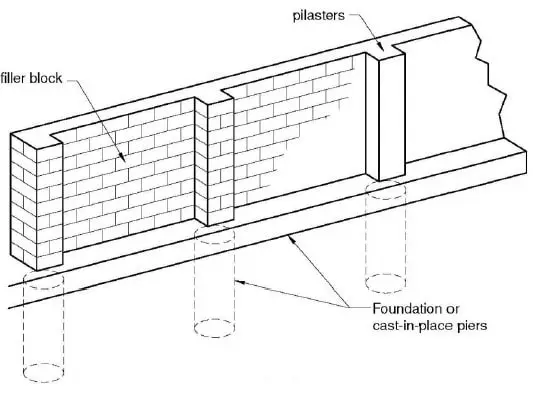Pilaster walls, often described as shallow, flattened columns, have been an integral element of architectural design for centuries. Derived from classical architecture, these structural features have evolved and adapted to various styles over time. In this article, we delve into the origins, characteristics, and diverse applications of pilaster walls, exploring their enduring role in shaping the aesthetics and functionality of architectural spaces.
Historical Roots:
The roots of pilasters trace back to classical Greek and Roman architecture, where they were employed as decorative elements to articulate walls and provide a sense of rhythm and proportion. Pilasters were often used in conjunction with columns and engaged columns to create visually appealing facades in structures such as temples, basilicas, and palaces.
Characteristics and Design:
Pilasters share some similarities with columns, featuring a base, shaft, and capital, but their projection from the wall distinguishes them. Unlike free-standing columns, pilasters integrated into the building’s structure, offering a sense of depth and relief to the façade. The design of pilasters allows architects to achieve a classical aesthetic while maintaining a flat, two-dimensional appearance.
Architectural Functionality:
While pilasters serve a significant aesthetic role, they also contribute to the structural integrity of a building. Pilaster walls often employed for load-bearing purposes, providing additional support to the structure. The engagement of pilasters with the wall distributes loads more effectively and reinforces the wall against lateral forces.
Varieties of Pilasters:
Over time, pilasters have evolved, and various styles have emerged to suit different architectural preferences. Tuscan, Doric, Ionic, Corinthian, and Composite are among the classical orders that influenced the design of pilasters. Additionally, pilasters have found adaptation in Renaissance, Baroque, and Neoclassical styles, showcasing their ability to transcend historical periods.
Decorative Applications:
Pilaster walls excel as decorative elements, adding a sense of grandeur and sophistication to architectural designs. They can adorned with intricate carvings, moldings, or other ornamental details, enhancing the overall aesthetic appeal of a building. Pilasters are often employed in the design of facades, entrances, and interiors to create a sense of visual balance and symmetry.
Interior Integration:
Pilaster walls are not confined to exterior applications; they play a crucial role in interior design as well. In residential and commercial spaces, pilasters are often incorporated into wall panels, cabinetry, and fireplace surrounds. Their ability to define and segment spaces adds a touch of classical elegance to both traditional and contemporary interiors.
Facade Enhancement:
The use of pilasters in facades is a time-honored tradition that continues to thrive in modern architecture. Pilasters contribute to the vertical rhythm of a building, breaking up large expanses of walls and adding a sense of proportion. The integration of pilasters with other architectural features, such as windows and cornices, enhances the overall composition of the facade.
Adaptation to Modern Architecture:
While pilasters have deep historical roots, they have proven to be adaptable to contemporary architectural styles. Architects today often reinterpret and incorporate pilasters into modern designs, blending classical elements with minimalist aesthetics. This adaptability showcases the enduring appeal and versatility of pilasters in the ever-evolving world of architecture.
Conclusion:
Pilaster walls stand as enduring architectural elements that have transcended centuries, proving their adaptability and aesthetic appeal across various styles and periods. From their origins in classical architecture to their modern interpretations, pilasters continue to contribute to the structural integrity, visual harmony, and timeless elegance of buildings. Whether serving a load-bearing function or enhancing the decorative aspects of a space, pilaster walls remain pillars of support in the world of architecture, connecting the past with the present and influencing the design language of the future.

